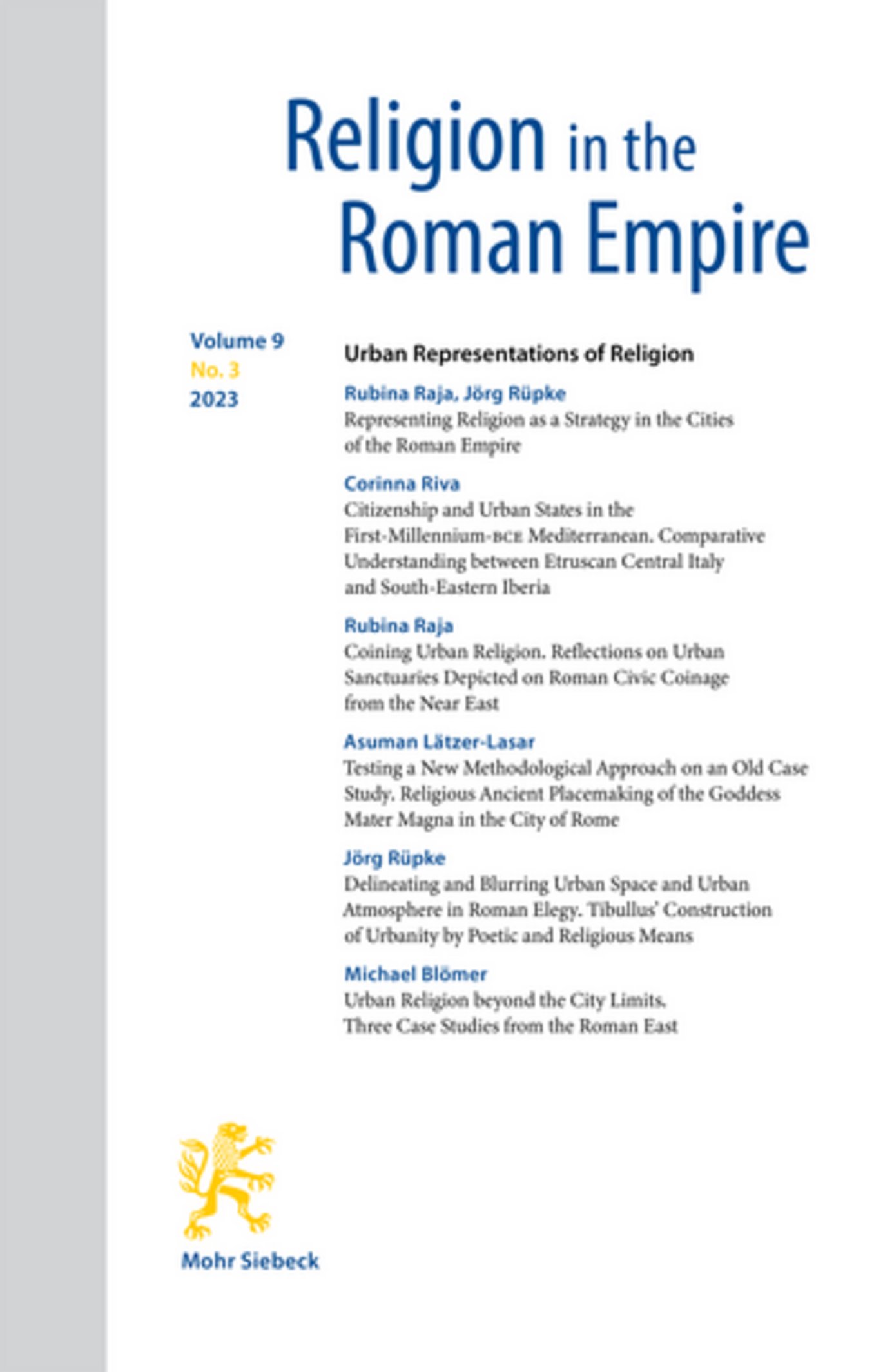Urban representations of religion
“Urban representations of religion” is the title of a volume that was recently published as a result of the cooperation between the Centre for Urban Network Evolutions (Urbnet) at the University of Aarhus and the Humanities Institute for Advanced Study “Religion and Urbanity: Reciprocal Formation” (Kolleg-Forschungsgruppe) at the Max Weber Centre of the University of Erfurt.

In the volume, five authors concern themselves with a set of issues pertaining to disentangling urban religion in urban settings through examining the representations of religion as a conscious strategy in cities of the Mediterranean world from Iberia in mid-first millennium BCE to the Eastern provinces of the Roman Empire in the first half of the first millennium CE. The evidence addressed is diverse, but the line of the enquiry stringent: through the data in context – its urban context – the strategies behind these representations are examined.
Urban representations of religion are not just self-referential in the sense of simply depicting themselves, reproducing urban rituals in urban contexts or even ritual contexts. The discourse about urbanity, about what it means to be urban, is far from being content with two forms of banalities (and the methodological problems these would imply). They are not simply articulating the locality as such, representing Pompeii in Pompeii, Rome in Rome, Mount Kasios on Mount Kasios. If that were the case, the concept of ‘urban religion’ would be trivial, would classify religion in cities as urban and the same phenomena as rural if situated in the countryside. Neither are they simply contrasting the urban and the rural. Admittedly, such a binary classification is part of ancient concepts of the Latin urbanitas or the Greek asteiotetês, too. However, the ancient authors of coins, texts, and rituals under scrutiny seem to have entertained much more complex views of the relationship of the urban and the rural, and have actually invested into crossing those boundaries – not to blur them but to think about them and to integrate or even exploit the rural for the sake of the urban.
Preceded by a substantial introduction by the editors, Corinna Riva addresses the role of religious practices and concepts for an analysis of Etruscan and Iberian concepts of citizenship seen as a bundle of practices of socio-political participation and membership in processes of urban state-formation. In her analysis, indebtedness is at the core of community, and it is in religious practices of performing indebtedness to divine beings that this is fundamentally and visibly enacted.
In the subsequent article on ‘Coining Urban Religion. Reflections on Roman Near Eastern Urban Sanctuaries Depicted on Civic Coinage’, Rubina Raja focuses on three well-known examples of Roman-period coins. They are examined and held up against the physical spatial reality within these cities in order to discuss whether spatial reality and coin images corresponded, or whether the coin images were rather used to convey a different (and perhaps manipulated) image of urbanity and the urban reality, underlining the importance of religion in the urban setting or perhaps magnifying the importance of the urban cults.
Asuman Lätzar-Lasar’s ‘Testing a New Methodological Approach on an Old Case Study. Religious Ancient Placemaking of the Goddess Mater Magna in the City of Rome’ turns to the city of Rome. Establishing a place for religious communication, be it a sanctuary, a grave or the erection of a dedication for a deity therefore had to be some kind of negotiation between the religious communicator and the physical and non-physical pre-existing environment. This took the daily necessities of all the city inhabitants into consideration.
In ‘Delineating and Blurring Urban Space and Urban Atmosphere in Roman Elegy. Tibullus’ Construction of Urbanity by Poetic and Religious Means’, Jörg Rüpke addresses the complexities of urban textual representations of religious practices in the city and the countryside. Here, Rüpke continues an exploration of Augustan literature as a discourse about urbanity that creates and thus changes ‘Roman’ religion.
In the volume’s final contribution, Michael Blömer treats ‘Urban Religion beyond the City Limits. Energised crowding and agglomeration were not only drivers for urban economic growth, but also promoted distinctive urban trajectories of religious developments in larger settlements and cities. Blömer explores examples of cities where the main cult centres were not situated within the nucleated urban centre. They were integral parts of the urban religious discourse, but the physical space of the sanctuary remained unaffected by some of the trajectories that had an impact on cults in the cities.
Some of the contributions go back to a conference held together at Copenhagen, others result from more recent collaborations. The whole volume as well as the individual contributions are open access.
Raja, R. and J. Rüpke (eds). 2023. Representing Religion as a Strategy in Cities of the Roman Empire, Religion in the Roman Empire 9.3: 299-443. Doi: 10.1628/rre-2023-0019.
